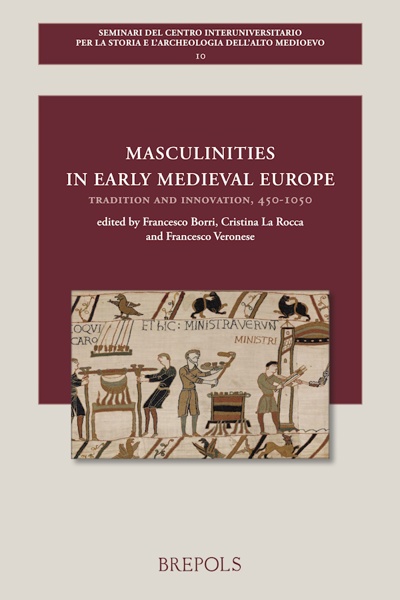
Three Empires, Three Cities
Identity, Material Culture and Legitimacy in Venice, Ravenna and Rome, 750-1000
Veronica West-Harling (ed)
- Pages: 351 p.
- Size:156 x 234 mm
- Illustrations:52 b/w
- Language(s):English, Italian
- Publication Year:2015
- € 90,00 EXCL. VAT RETAIL PRICE
- ISBN: 978-2-503-56228-5
- Paperback
- Available
- € 90,00 EXCL. VAT RETAIL PRICE
- ISBN: 978-2-503-56562-0
- E-book
- Available
A comparative history of Rome, Ravenna and Venice through an exploration of their post-Byzantine identity before 1000.
“(…) the excellent contributions and discussions of this volume illuminate what was at stake for these cities and the various factors that underscored their development and the outcomes at the end of the first millennium.” (Edward M. Schoolman, in The Medieval Review, 2016.09.04)
“It is to be hoped that that this original and provocative book will stimulate further comparative work on the distinct nature and common features of three of Italy’s most interesting cities.” (Tom Brown in Early Medieval Europe, 27/2, 2019, p. 321)
« Il faut saluer l’approche multidisciplinaire de ce recueil qui démontre, une fois de plus, la complémentarité des approches historienne et archéologique. » (Matthias Rozein, dans Le Moyen Âge, 3-4, 2022, p. 780)
Veronica West-Harling is a Research Fellow in the History Faculty at Oxford. She has published several books on Anglo-Saxon and Early Medieval Italian history, and collaborated with Chris Wickham on the 3-year AHRC project on which this workshop is based. She is currently publishing a book on Rome, Ravenna and Venice, 750-1000: Byzantine Heritage, Imperial Present and the Construction of City Identity, with Oxford University Press.
This book focuses on three Italian cities in the early middle ages, Rome, Ravenna and Venice, and looks at them in a new light. The unifying element linking them was their common Byzantine past, since they remained in the sphere of imperial power after the creation of the Lombard kingdom in the late 6th century, up to 750. What happened to them when their links with the Byzantine Empire were almost entirely severed in the 8th century? Did they remain socially and culturally heirs of Byzantium in the 9th and 10th centuries in their political structures, social organisation, material culture, ideological frame of reference and representation of identity? Or did they become part of the next imperial powers of Italy, the Carolingian and the Ottonian empires? A workshop in Oxford in 2014 brought together an international group of specialists to discuss these questions in a comparative context; the excitement of their debates is captured in the discussion sections linking the papers in this volume. Early medieval Italy can be seen in a new way as a result.
Veronica West-Harling Preface
Veronica West-Harling Introduction
Session I: Venice: creation of a city and its identity
Stefano Gasparri The formation of an early medieval community: Venice between provincial and urban identity
Sauro Gelichi La storia di una nuova città attraverso l’archeologia: Venezia nell’alto medioevo
Session II: Ravenna: the city and its ruler
Enrico Cirelli Material Culture in Ravenna and its hinterland between the 8th and the 10th century
Session III: Rome: the reality of power
Riccardo Santangeli Valenzani Topografia del potere a Roma nel X secolo
Session IV: Rome: reinterpreting the city’s past
Caroline Goodson To be the daughter of Saint Peter: S. Petronilla and forging the Franco-Papal Alliance
Sessions V and VI: Empires
Paolo Delogu I Romani e l'Impero (VII-X secolo)
François Bougard Les Francs à Venise, à Ravenne et à Rome, facteur d’identité urbaine ?
Hagen Keller Identità romana e l’idea dell’Imperium Romanorum nel decimo e nel primo undicesimo secool
Session VII: Round table discussion/Tavola rotonda
Chris Wickham Conclusions
Index




